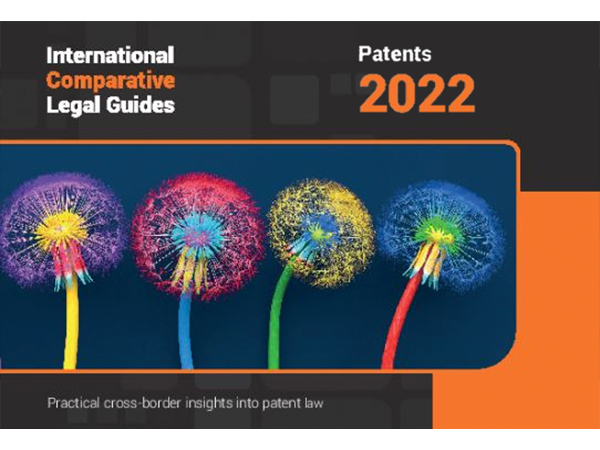
Intellectual Property
Viewpoints
Filter by:
Federal Circuit Approves Apportioning Damages through a Thorough and Reliable Analysis of the Royalty Rate
February 15, 2018 | Blog
On January 12, 2018 in Exmark Manufacturing Co. Inc., v. Briggs & Stratton Power Products Group, LLC, the Federal Circuit once again addressed the issue of apportioning damages, an area of the law that continues to evolve. The parties in Exmark are competitors in the commercial lawn mower market.
Read more
The Medicines Company v. Hospira, Inc.
February 14, 2018 | Blog | By Brad M Scheller
The Medicines Company (“MedCo”) appealed findings of no infringement made by the United District Court for the District of Delaware. Hospira cross-appealed the district court’s finding that a distribution agreement did not constitute an invalidating “offer for sale” under 35 U.S.C. § 102(b).
Read more
Patent Term Adjustment: Lessons Learned from the Federal Circuit Decision in Actelion v. Matal
February 14, 2018 | Blog | By Christina Sperry
On February 6, 2018, in Actelion v. Matal, the Federal Circuit affirmed the decision of the district court granting summary judgment in favor of the United States Patent and Trademark Office (PTO).
Read more
Improper Reliance on Informal “Opinion of Counsel” Part of Basis for Exceptional Case Award
February 5, 2018 | Blog | By Andrew DeVoogd, Anthony Faillaci
In Drop Stop LLC v. Jian Qing Zhu et al, 2-16-cv-07916 (CACD January 22, 2018), the Central District of California granted Plaintiff’s motion to award attorney fees due to Defendants’ exceptional litigation tactics under 35 U.S.C. § 285.
Read more
International Trade Commission Becomes Even More Potent Venue for Victims of Trade Secret Misappropriation
January 30, 2018 | Blog | By Michael Renaud, Nick Armington
Speed is almost always of the essence for the victim of trade secret misappropriation. Many companies ground their business in proprietary information that, if made public, would make the exclusive product or service those companies provide a commodity good.
Read more
Sued Customers Insufficient to Prove a Supplier’s Actual Case or Controversy Against Patentee
January 30, 2018 | Blog | By Andrew DeVoogd, Courtney Herndon
In an interesting order issued recently in BroadSign International, LLC v. T-Rex Property AB, Judge Swain of the Federal District Court for the Southern District of New York dismissed the Plaintiff’s declaratory judgment of patent non-infringement for a lack of subject matter jurisdiction.
Read more
Information Disclosure Statements: When and How to File?
January 24, 2018 | Blog | By Christina Sperry, Elissa Kingsland
Under U.S. patent law, while there is no duty to perform a search of relevant art, inventors and those associated with filing or prosecuting patent applications as defined in 37 C.F.R. § 1.56 have a duty to disclose to the U.S. Patent and Trademark Office (USPTO) all known prior art or other information that may be “material” in determining patentability.
Read more
Overcoming Obviousness Rejections: Arguing Changes to Fundamental Principle of Operation
January 24, 2018 | Blog | By Christina Sperry, Monique Winters Macek
When trying to overcome an obviousness rejection of a patent claim, an argument that two or more cited references cannot be combined may be used. For example, it can be argued that the combination is improper because the modification of a reference completely changes its “fundamental principle of operation.”
Read more
Damages Apportionment for Infringing A Method Claim When The Smallest Saleable Unit Performs Infringing and Non-Infringing Functions
January 22, 2018 | Blog
The Federal Circuit’s damages apportionment jurisprudence is an ever-evolving area of the law. On January 10, 2018, a three judge panel of the Federal Circuit revisited the issue in connection with a patent covering a method for providing computer security in the case Finjan, Inc. v. Blue Coat Systems, Inc.
Read more
Wi-Fi One v. Broadcom: en banc Federal Circuit Held The Time-Bar Determinations (§ 315(b)) Appealable
January 16, 2018 | Blog | By Michael Newman, Catherine Xu
In its first en banc decision of 2018, the Federal Circuit held that “judicial review is available for a patent owner to challenge the U.S. Patent and Trademark Office’s determination that the petitioner satisfied the timeliness requirement of 35 U.S.C. § 315(b) governing the filing of petitions for inter partes review.”
Read more
Have you ever used a one-click ordering process online? Then you indirectly paid Amazon.
January 8, 2018 | Blog | By Lisa Adams
If you purchased anything from a website using a one-click purchase button, you indirectly paid Amazon for that ability, at least up until September 11, 2017 when Amazon’s patent to this technology expired. As a result, one-click purchasing might become the new norm.
Read more
Year in Review: The Most Popular Blog Posts of 2017
January 3, 2018 | Blog | By Christina Sperry
As 2018 begins and IP strategies are being developed for the new year, it is a good time to reflect on what IP issues were prominent in 2017. According to the many readers of Global IP Matters, hot topics included navigating the waters of U.S. patent prosecution, evaluating obviousness, and ITC treatment of standard-essential patents (SEPs).
Read more
Defendants Waived Venue Challenge After Waiting Four Months After TC Heartland Decision to Move
January 2, 2018 | Blog | By Andrew DeVoogd, Anthony Faillaci
In a recent development from the Eastern District of Texas, Magistrate Judge Roy S. Payne concluded that defendants Globalfoundries, Qualcomm, and Samsung waited too long prior to moving to dismiss or transfer the case due to improper venue.
Read more
Assertion of Patents Results in Loss of Sovereign Immunity for Public Universities
December 28, 2017 | Blog | By Thomas Wintner
On December 19, 2017, an expanded panel of the Patent Trial and Appeal Board (PTAB) ruled that the state of Minnesota waived its Eleventh Amendment immunity to challenges to patent validity by inter partes review (IPR) by filing suit in federal court alleging infringement of the same patent being challenged by IPR.
Read more
Recap of PTAB’s “Chat with the Chief”
December 21, 2017 | Blog | By Christina Sperry
On December 19, 2017 the Patent Trial and Appeal Board (the “Board”) held a “Chat with the Chief” webinar in which Chief Judge David Ruschke presented very recent developments on a variety of topics related to practice before the Board, including Aqua Products guidance for motions to amend, new procedures for handling remands, and the expanded panel process.
Read more
Lower Courts Continue to Grapple with Venue in the Wake of In re Micron and In re Cray
December 19, 2017 | Blog | By Andrew DeVoogd, Anthony Faillaci
Further to our ongoing coverage of the post-TC Heartland patent litigation landscape, a pair of recent and interesting cases from Texas and Delaware further evolved this important venue-related jurisprudence.
Read more
Federal Circuit Rules that BPCIA Preempts State Law Biosimilars Claims
December 18, 2017 | Blog | By Thomas Wintner, Joe Rutkowski
In an opinion issued on December 14, 2017, the United States Court of Appeals for the Federal Circuit held that the 2010 Biologics Price Competition and Innovation Act (“BPCIA”) preempts the use of state law to penalize biosimilars applicants who fail to disclose information about their abbreviated Biologics License Applications (“aBLAs”) or manufacturing processes as required by 42 U.S.C. § 262(l)(2)(A).
Read more
SAS v. Matal – Overview of Oral Arguments in the Supreme Court
December 12, 2017 | Blog | By Adam Samansky, Brad M Scheller , Inna Dahlin
On Monday, November 27, 2017, the Supreme Court heard oral arguments in SAS Institute v. Matal.
Read more
Supreme Court Hears Oral Arguments in Oil States Regarding Constitutional Challenge to Inter Partes Review
December 8, 2017 | Blog | By Michael Renaud, Andrew DeVoogd
We first covered the Supreme Court’s grant of certiorari in Oil States Energy Servs., LLC v. Greene's Energy Grp., LLC, 137 S. Ct. 2239 (2017), a case with the potential to substantially alter the patent litigation landscape, back in June. On Monday, November 27, 2017 the Court heard oral arguments on whether inter partes review – an adversarial process used by the Patent and Trademark Office (PTO) since September 16, 2012 to analyze the validity of existing patents – violates the Constitution by extinguishing private property rights through a non-Article III forum and without a jury.
Read more
Patent Quality Chat: How Is A USPTO Examiner’s Work Product Reviewed?
December 4, 2017 | Blog | By Christina Sperry
In patent prosecution, the feedback loop between interested parties including patent prosecutors, inventors, and in-house counsel helps to provide the best patent applications and office action responses for a high quality issued patent.
Read more
Explore Other Viewpoints:
- Antitrust
- Appellate
- Arbitration, Mediation & Alternate Dispute Resolution
- Artificial Intelligence
- Awards
- Bankruptcy & Restructuring
- California Land Use
- Class Action
- Complex Commercial Litigation
- Construction
- Consumer Product Safety
- Cross-Border Asset Recovery
- Debt Financing
- Direct Investing (M&A)
- Diversity
- EB-5 Financing
- Education & Nonprofits
- Employment
- Energy & Sustainability
- Environmental Enforcement Defense
- Environmental Law
- FDA Regulatory
- Federal Circuit Appeals
- Financial Institution Litigation
- Government Law
- Growth Equity
- Health Care
- Health Care Compliance, Fraud and Abuse, & Regulatory Counseling
- Health Care Enforcement & Investigations
- Health Care Transactions
- Health Information Privacy & Security
- IP Due Diligence
- IPRs & Other Post Grant Proceedings
- Immigration
- Insolvency & Creditor Rights Litigation
- Institutional Investor Class Action Recovery
- Insurance & Financial Services
- Insurance Consulting & Risk Management
- Insurance and Reinsurance Problem-Solving & Dispute Resolution
- Intellectual Property
- Investment Funds
- Israel
- Licensing & Technology Transactions
- Life Sciences
- Litigation & Investigations
- M&A Litigation
- ML Strategies
- Medicare, Medicaid and Commercial Coverage & Reimbursement
- Mergers & Acquisitions
- Patent Litigation
- Patent Prosecution & Strategic Counseling
- Pharmacy Benefits and PBM Contracting
- Portfolio Companies
- Privacy & Cybersecurity
- Private Client
- Private Equity
- Pro Bono
- Products Liability & Complex Tort
- Projects & Infrastructure
- Public Finance
- Real Estate Litigation
- Real Estate Transactions
- Real Estate, Construction & Infrastructure
- Retail & Consumer Products
- Securities & Capital Markets
- Securities Litigation
- Special Purpose Acquisition Company (SPACs)
- Sports & Entertainment
- Strategic IP Monetization & Licensing
- Tax
- Technology
- Technology, Communications & Media
- Technology, Communications & Media Litigation
- Trade Secrets
- Trademark & Copyright
- Trademark Litigation
- Value-Based Care
- Venture Capital & Emerging Companies
- White Collar Defense & Government Investigations
- Women's Health and Technology




